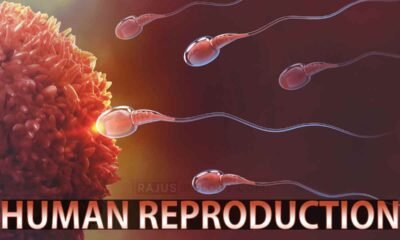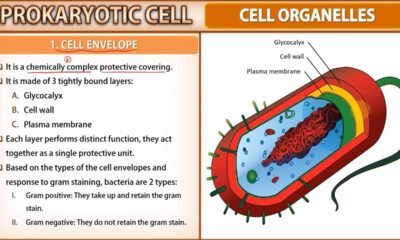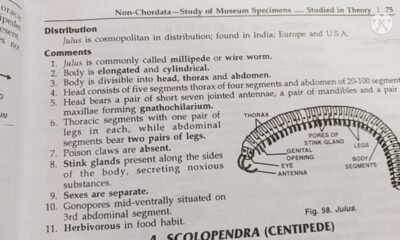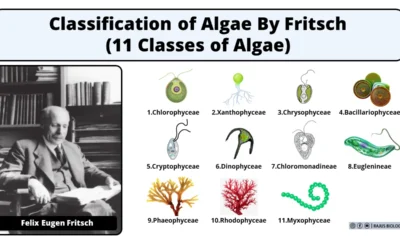Blog
Earthworm Reproductive System Short Notes | Free Biology Notes
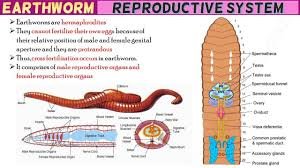
In this article we will discuss about the earthworm reproductive system
Earthworm Reproductive System
- Earthworms are hermaphrodites
- They cannot fertilize their own eggs because of their relative position of male and female genital aperture and they are protrandous
- Thus, cross fertilization occurs in earthworm.
- Earthworm reproductive system comprises of male reproductive organs and female reproductive organs
Male Earthworm Reproductive System
Testes
- Two pairs of testes located in 10th and 11th segment
- Testis produce spermatogonia and each testis is located testis sac
- Function: They produce sperm
Seminal vesicles
- It has two pairs of seminal vesicles. They are located in 11th and 12th segments
- They are also termed as septal pouches, as they develop as septal outgrowths.
- Function: Maturation of sperm takes place in seminal vesicles
Spermiductal Funnels
- Earthworms have two pairs of seminal funnels
- These are located at the 10th and 11th segments.
- Function: Passing on spermatozoa to the Vasa deferentia and onwards.
Vasa deferentia
- It is thin, long, narrow, thread like tubular structure
- Two pairs and each pair is located on the either side of the alimentary canal
- They extends from 12th to 18th segment.
- In 18th segment they join together with a thick prostatic duct and forms common prostatic duct
- Function: They collect sperm from spermatic funnel and give to prostate gland
Prostate gland
- Pairs of large, solid, and irregularly shaped glandular masses
- Situated in the segments from 17th to 20th
- Ventral side of 18th segment, prostatic duct opens via a male genital pore
- Function: It produce prostatic fluid which is alkaline in nature. It activates sperms. And also it keeps sperm motile.
Accessory glands
- These are two pair of whitish, spherical structures found one pair in each of the 17th and 19thsegment.
- Function: Secretion of these gland helps in holding two worms during copulation.
Male genital pore
- It is found in one pair located in 18th segment.
- Function: It acts as male genital pore.
Female Earthworm Reproductive System
Ovaries
- One pair of ovaries present on 13th segments
- Each ovary consists of several finger like processes in which ova are arranged in a linear series in various stage of development
- Function: they form ova
Oviducal funnel
- Each oviducal or ovarian funnel arises from both ovaries
- Oviducal funnels appear as large saucers consisting of ciliated margins
- Function: ova enter through oviducal funnel and travel backward along the oviduct.
Oviduct
- Each ovarian funnel continues into the oviduct.
- Oviducts open on female genital pore in the 14th segment
- Function: they collect ova from ovary and give to female genital pore.
Spermathecae
- Spermathecae are 4 pairs – one pair each in the 6th, 7th, 8th, and 9th segments.
- The spermatheca opens to the exterior via small ducts
- Function: spermatheca is to receive and store spermatozoa from another earthworm during copulation
Female genital pore
- It is a single unpaired small pore, lies in 14th segment.
Copulation
- During copulation two earthworms come closer and are ventrally attached in opposite direction
- Both worms remain united together by the secretion of accessory glands and also by mutual penetration of setae in each other’s body
- Sperm and prostatic fluid of each worm are exchanged and released or stored in spermathecae through spermathecal pore
- Copulation lasts for about an hour
- Fertilization is thus external, taking place in the cocoons.
Cocoon Formation In Earthworm
- Cocoon formation takes place after copulation, when ovaries mature.
- The epidermis of clitellar region contain 3 kinds of gland
- Mucous gland: produce mucus
- Cocoon secreting gland: secrete wall of cocoon. Also secrete a gelatinous viscid and sticky substance
- Albumen gland cell: produce albumen; serves for nourishment of the growing embryo
- These gland secretion soon harden on exposure to the air, into a tough but elastic tube which is called cocoon or egg capsule.
- Worm starts to wriggle behind so that the girdle slipped forward
- Girdle pass over the female genital pore, it receives ova and when it passes over spermathecal, it receives sperm through spermathecal pores
- The girdle is thrown off from the anterior end and soon the elasticity of its wall closes up two ends to form a cocoon or ootheca.
Fertilization
- Fertilization takes place inside the cocoon, where each ovum is fertilized by sperm.
- Albumen cells provide nutrition to the embryo
- Young one hatch out after 2-2.5 months
- Development is direct without any larval stage.

 Blog6 months ago
Blog6 months ago[PPT] Human Reproduction Class 12 Notes

 Blog6 months ago
Blog6 months agoCell The Unit of Life Complete Notes | Class 11 & NEET Free Notes
- Blog6 months ago
Contribution of Indian Phycologists (4 Famous Algologist)
- Blog6 months ago
PG TRB Botany Study Material PDF Free Download

 Blog6 months ago
Blog6 months ago[PPT] The living world Class 11 Notes

 Blog6 months ago
Blog6 months agoJulus General Characteristics | Free Biology Notes

 Blog6 months ago
Blog6 months agoClassification of Algae By Fritsch (11 Classes of Algae)

 Entertainment6 months ago
Entertainment6 months agoIbomma Bappam: Redefines Telugu Streaming Trend





